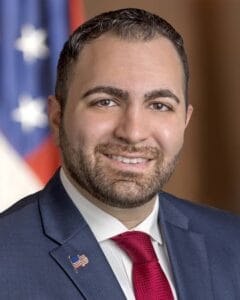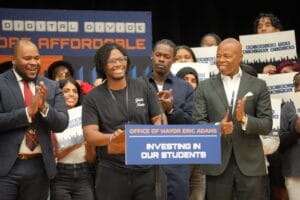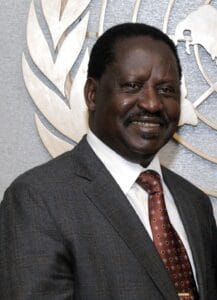When History, Politics, Economics and Education Intersect

Parents, teachers, and community leaders have been pointing out for a very long time how poverty and its by-products are in fact the major factor that impedes the performance of schools and students in low-performing schools in poor neighborhoods. It is not a coincidence that low performing schools are most often located in underserved communities. The data is out there. The powers that be know that fixing education is not a piecemeal affair, and it cannot be done separately from helping to fix dilapidated communities.
It is not a coincidence that low performing schools are most often located in underserved communities. The data is out there.
The powers that be know that fixing education is not a piecemeal affair, and it cannot be done separately from helping to fix dilapidated communities.
I have heard pundits, experts and stakeholders all agree that education doesn’t happen in a vacuum, schools are not islands, and that reopening will depend on what is happening in communities concerning the Coronavirus pandemic.
Our own governor said the coronavirus infection level needed to be at 5% before schools can reopen. Just like the current Coronavirus pandemic affects us in every way that we can think of and will affect the way our schools operate for the foreseeable future, the pandemic of poverty has been affecting poor children in every aspect of their lives and their education for decades.
Just like the Coronavirus pandemic will dictate how schools will operate, the poverty pandemic will continue to dictate the low performance of schools and students for decades to come, unless decisive measures are taken.
I contend that although we do need to invest a lot of money in our schools for resources, it is not in the schools that we need the biggest investments. It is in the communities in which the poorest schools are located that we need to invest the most because those schools are a clear reflection of the communities that house them.
If we want to fix the schools that are underperforming, we need to simultaneously fix the communities in which they are located.
In the long run, the communities will matter-of-factly and automatically continue to invest in the schools because it is a natural partnership.
For schools, by their very nature, are community hubs – in the same fashion as parks, churches, and community centers. So, what does it mean to truly invest in poor neighborhoods and how would that help the schools?
For parents who are already working, living wages and decent salaries are needed. Rigorous job training programs and the creation of dignified jobs with living wages and decent salaries for non-working, able bodied parents are needed.
Parents with decent salaries who are not forced to work two or three jobs to make ends meet would now be more available to support their children’s schools and their children’s educational progress. That would help teachers and parents play their roles more effectively and in the complementary manner it ought to be.
Instead of schools breaking their backs to find ways to help provide basic needs for their students and families, it would be the parents and the community bringing resources into the schools.
Parents would be able to adequately feed their children so that hunger will not hinder a child’s academic performance. Parents would be able to afford extra academic help and more extracurricular activities for their children that would enrich the children academically.
Expedient health care services through Medicaid and Medicare is needed. Private health insurance for those who do not have any insurance, but do not qualify for Medicaid or Medicare is needed and still cannot afford health care through the ACA and Expanded Medicaid Program is needed – so that everyone is covered.
When children or family members get sick, the children will not have to miss as many school days because they were unable to see a doctor or buy medicine in a timely fashion. Older siblings would not have to continuously miss school to care for sick parents or sick younger siblings. When facing mental health issues, parents would be able to find the needed/additional resources and sustained help for their children and our students much faster.
A fair criminal justice system that seeks to rehabilitate (not just punish) and that is also just in its sentencings is needed. That would help keep parents and children out of jail and prison so they can put the accent on education.
Nobody talks about the impact of the criminal justice system, the rate of recidivism and the failure of re-entry on our students in terms of truancy and performance.
Yet, it’s a reality. But with a fairer criminal justice system and more legal resources, parents can obtain quick help for themselves and their children when there is a legal crisis at home – reducing absenteeism when a child or a parent is facing a trial or jail/prison time.
Adequate social programs that truly invest in the formerly incarcerated can help reduce recidivism and make re-entry more successful, thereby helping our students and parents.
Not weaponizing ACS is essential. There are times when parents are punished for their poverty by having their children taken away by ACS, instead of receiving the help they need.
What schools will sometimes describe as child neglect or educational neglect is really a parent’s inability to provide the basics, get help for substance abuse (which apparently is a crime for poor people, but a disease for richer folks) or mental illness, such as depression.
Investments in housing – in all its forms NYCHA, the shelter system, Section 8, affordable housing programs, home ownership and fair renting opportunities – would be deeply helpful.
We talk about food insecurity and take into consideration the impact of malnutrition and hunger on education by providing free lunch and free breakfast programs.
But we don’t do enough to mitigate the impact and solve the problem of housing insecurity on education. Students who are living in homes that have no heat or hot water or that are falling apart may not make it to school often (due to illness, fatigue or general malaise), may not perform well in school, and may not keep up with homework.
Students who are transient, moving from shelter to shelter, group/foster home to group/foster home may not perform well in school.
Abundant, vibrant, robust community and cultural enrichment programs are needed.
Underserved communities are by and large traumatized communities with overwhelming deficiencies because our psychological, emotional, economic, physical, intellectual, social and communal needs are rarely ever met. And when they are met, the manner in which it is done is often undignified, dysfunctional and substandard.
It is not just the schools and the students that underperform academically. It is the families and the communities that are underperforming in every aspect of life.
Hence, training and exposure is needed in everything. The fact that many of our families have never left the ten-block radius that they grew up in tells us all that we need to know.
It is not by accident, for example, “by age 3,… that children growing up in poor neighborhoods or from lower-income families may hear up to 30 million fewer words than their more privileged counterparts.” See Christopher Bergland’s article on February 15, 2014 “Tackling the ‘Vocabulary Gap’ Between Rich and Poor Children” in Psychology today.
It is the direct result of the lack of a vibrant, robust and rich community environment.
Educated role models matter. A real investment plan in the Bronx and other underserved communities would allow more folks to obtain an education in much needed fields to support the community, e.g. teachers, doctors, lawyers, writers, artists, engineers, psychologists, entrepreneurs and business men and women, etc., providing local role models and accessible resources right here in the community.
And in terms of actual school resources, we could finally get to the point of a real school-community partnership in which the community, families, individuals and businesses could join forces in providing additional resources to schools and do the extra things that richer school districts and private schools can do.
These are just a few things that if we did in the poor communities while investing in the schools would make a major difference in closing the achievement gap.
In the schools themselves, as mentioned before, we would need adequate investments in technology, classroom libraries, all sorts of academic and cultural enrichment programs, updated laboratories, physical updates to the buildings, educational excursions, extracurricular activities, etc., etc. – not just for a few children in a few designated programs, but for every child in every school.
And yes, we would need more teachers, dynamic curricula, smaller class sizes, dozens of school psychologists, counselors and social workers in every school building with real support teams, ample support for students with disabilities and the families of our students.
And for children who need to start working early to help out their families, who do not envision going to college or going to college immediately, please bring back the vocational, career and technical schools.
The truth is the quality of someone’s life should not depend on a college degree. Having conceded that point, I must say that while we would like to think that the underperformance of our schools is just a question of resources, it must be said that it is also a question of structure and the intersectionality of multiple agencies.
How would things change in our underperforming public schools if we were to restructure our schools and address the issue of the intersectionality of multiple agencies in our schools? Please stay tuned for Part III as we explore that novelty.
In the meantime, please join our effort to get the state and the city to simultaneously invest in poor neighborhoods and poor schools. Please also join our effort to get folks from the private sector to invest in our schools. Thank you so much! You are much appreciated.
From the desk of an educator and former DOE teacher, Farah Despeignes, permanently certified ELA Teacher.











